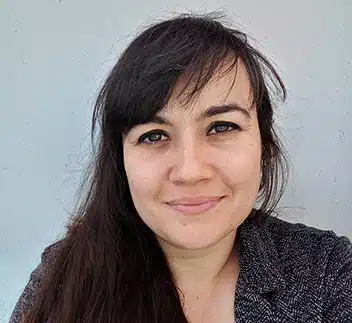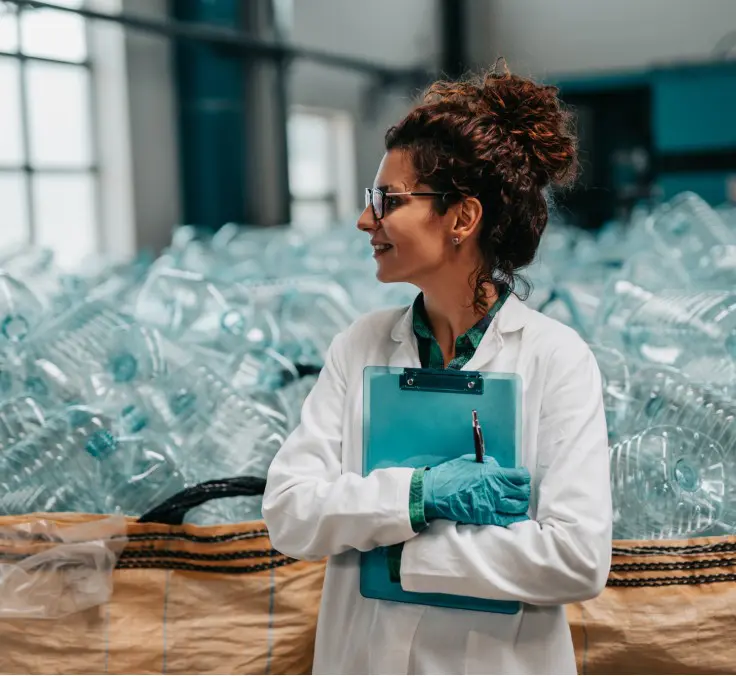SUSTAINABILITY | 05.16.2024
Entrepreneurship today has a clear objective: the circular economy
Implementing the circular economy is the path to the future. The objective is to redesign the linear model so that production and consumption are not the endpoint, but parts of an ongoing process that opens up new opportunities for exploration and entrepreneurship.
Amidst the current climate crisis, traditional economic and production models must be reconsidered. These types of systems are based on a linear scheme: resources or raw materials are extracted to manufacture a series of products that, once they have fulfilled their function, reach the end of their useful life and are discarded. This paradigm was developed on a massive scale during the Industrial Revolution, but it has proven to be unsustainable today.
In response to this, the circular economy emerges, advocating for the production chain to be viewed as an endless loop, where each phase of the process can in turn become the beginning of a new phase. There’s no obvious beginning or end; instead, the focus is on maximizing use with sustainability as the guiding principle. By doing so, it promotes more efficient management of energy sources, resources, and waste generated.
Entrepreneurship within circularity
The circular economy is both a climate necessity and an opportunity from a financial and labor perspective. According to Goldman Sachs data, it could add $4.5 trillion to international economic output by 2030, a figure projected to increase to $25 trillion by 2050. For European Union companies, this shift in model would result in savings ranging from €250 to €465 million, representing 12 to 23 percent of their material costs. In terms of employment, it’s estimated that a global circular economy could lead to the creation of seven to eight million new jobs by 2030.
Entrepreneurship will undoubtedly account for many of these jobs. The circular economy offers a whole new range of possibilities for those willing to seize them. The commitment to redesigning the value chain brings about new business models, which the consulting firm Accenture systematizes around five keys: savings and renewable resources, product-as-a-service, shared-use platforms, extended product life, and resource recovery.
These models require agents that can link them to the chain of the previously linear model. Green entrepreneurship finds its greatest potential here, by working with innovative and flexible initiatives such as waste recycling and management, which seek to make better use of materials that would be discarded in a linear model. Remanufacturing previously used items allows them to be restored to a condition equal to or better than the original. Sustainable product design incorporates green value from the conception phase, using recyclable or recycled materials that can be repaired or upgraded.
Working together for a green economy
In recent years, the public and various governments have become increasingly aware of the need to change the production model. The UN Sustainable Development Goals dedicate Goal 12 to responsible production and consumption. For years, the European Union has been implementing measures to promote the new model. In March 2020, the European Commission launched its Circular Economy Action Plan, which includes more than 30 measures to promote the circular economy and has been updated since then.
In 2021, the Latin American and the Caribbean Circular Economy Coalition was formed, coordinated by the United Nations Environment Programme. It currently has 17 member countries, including the region’s main economies, such as Mexico, Argentina, Chile, and Uruguay.
When it comes to national measures, the U.S. Environmental Protection Agency released only two drafts last year to reduce food waste and prevent plastic pollution. In Spain, the Pact for a Circular Economy was established in 2017, reinforced in 2020 with the Spanish Circular Economy Strategy (EEEC) and the enactment of a law in 2022.
But these efforts shouldn’t fall on governments and citizens alone; the success of the circular economy hinges on the involvement of companies. At MAPFRE, this commitment made us the first insurance company to sign the Spanish Pact. Our environmental policy includes the promotion of the circular economy through business integration, robust environmental management, and cultivating responsibility as key principles of action.
This is accompanied by specific actions. At MAPFRE, we have an active policy of supporting green entrepreneurship by financing initiatives that promote sustainable employment. We’ve achieved Zero Waste certification at our headquarters and university campus in Spain and are implementing this waste management model in Mexico and Brazil. Through the Yo Reparo program, repair shops, tow truck drivers, and appraisers in Spain, Brazil, and the United States have received training on the environmental impact of their operations.
Our R&D center, CESVIMAP, has spearheaded Second Life, an initiative to recycle or reuse batteries from electric vehicles that have been involved in a claim. The center is also taking part in BATRAW 2022-2026, a European research project that aims to recycle up to 98% of battery parts and optimize waste management processes.
The circular economy is the commitment we need to build a sustainable future, a commitment in which green entrepreneurship plays a pivotal role.
RELATED ARTICLES:




